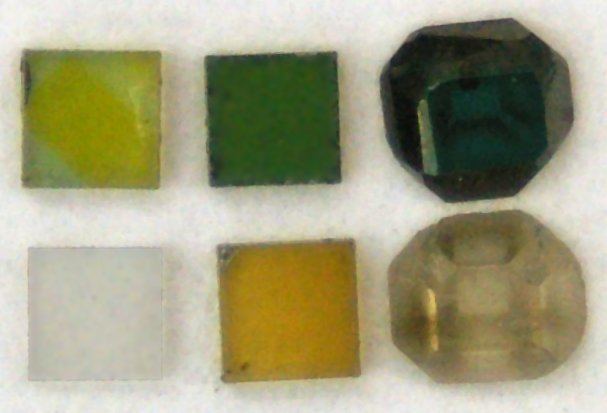 | ||
The gemstone irradiation is a process in which a gemstone is artificially irradiated in order to enhance its optical properties. High levels of ionizing radiation can change the atomic structure of the gemstone's crystal lattice, which in turn alters the optical properties within it. As a result, the gemstone's color may be significantly altered or the visibility of its inclusions may be lessened. The process, widely practised in jewelry industry, is done in either a nuclear reactor for neutron bombardment, a particle accelerator for electron bombardment, or a gamma ray facility using the radioactive isotope cobalt-60. Irradiation has enabled the creation of gemstone colors that do not exist or are extremely rare in nature.
Contents
Radioactivity and regulations
The term irradiation is a very broad one, which covers bombardment by subatomic particles as well as the use of the full range of electromagnetic radiation, including (in order of increasing frequency and decreasing wavelength) infrared radiation, visible light, ultraviolet radiation, X-rays and gamma rays.
Certain natural gemstone colors, such as blue-to-green colors in diamonds, are the results of the exposure to natural radiation in the earth, which is usually alpha or beta particle. The limited penetrating ability of these particles result in partial coloring of the diamond's surface. Only high-energy radiation such as gamma ray or neutron can produce fully saturated body colors, and the sources of these types of radiation are rare in nature, which necessitates the artificial treatment in jewelry industry.
Irradiation, particularly when done in a nuclear reactor, can make gemstones slightly radioactive, so they are typically set aside for a couple of months to allow any residual radioactivity to decay. The first documented artificially irradiated gemstone was created by English chemist Sir William Crookes in 1905, by burying a diamond in powdered radium bromide. After having been kept there for 16 months, the previously colorless diamond became green. This method produced a dangerously high degree of long-term residual radioactivity and is no longer in use. However, radium-treated green diamonds are still occasionally found in markets, which can be detected by a Geiger counter or by making autoradiographs on photographic films.
The concerns for possible health risks related to the residual radioactivity of the gemstones led to government regulations in many countries. In the United States, the Nuclear Regulatory Commission (NRC) has set strict limits on the allowable levels of residual radioactivity before an irradiated gemstone can be distributed in the country. All neutron- or electron beam-irradiated gemstones must be tested by an NRC-licensee prior to release for sales. In India, the Bhabha Atomic Research Centre started irradiating gemstones in the early 1970s. In Thailand, the Office of Atoms for Peace (OAP) conducts the process for private sectors, irradiating 413 kilograms (911 lb) of gemstones from 1993 to 2003.
Materials and results
The most commonly irradiated gemstone is topaz, which becomes blue after the process. Blue topaz is very rare in nature and almost always the result of artificial irradiation. According to the American Gem Trade Association, approximately 30 million carats (6,000 kg (13,000 lb)) of topaz are irradiated every year globally, 40 percent of which were done in the United States as of 1988. As of 2011, no topaz is neutron irradiated in the US; major treatment areas are Germany and Poland. A lot of linear accelerated treatment is done in Bangkok.
Diamonds are usually irradiated to become yellow, blue-green or green, although other colors are possible.
Quartz may be irradiated to produce amethyst and other colors.
Colorless beryls, also called goshenite, become pure yellow when irradiated, which are called golden beryl or heliodor.
Pearls are irradiated to produce gray blue or gray-to-black colors. Methods of using a cobalt-60 gamma ray facility to darken white Akoya pearls were patented in the early 1960s. But the gamma ray treatment does not alter the color of the pearl's nacre, therefore is not effective if the pearl has a thick or non-transparent nacre. Most black pearls available in markets prior to the late 1970s had been either irradiated or dyed.
Uniformity of coloration
Gemstones that have been subjected to artificial irradiation generally show no visible evidence of the process, although some diamonds irradiated in an electron beam may show color concentrations around the culet or along the keel line.
In topaz, some irradiation sources may produce mixtures of blue and yellow-to-brown colors, so heating is required as an additional procedure to remove the yellowish color.
Color stability
In some cases, the new colors induced by artificial irradiation may fade rapidly when exposed to light or gentle heat, so some laboratories submit them to a "fade test" to determine color stability. Sometimes colorless or pink beryls become deep blue upon irradiation, which are called Maxixe-type beryl. However, the color easily fades when exposed to heat or light, so it has no practical jewelry application.
